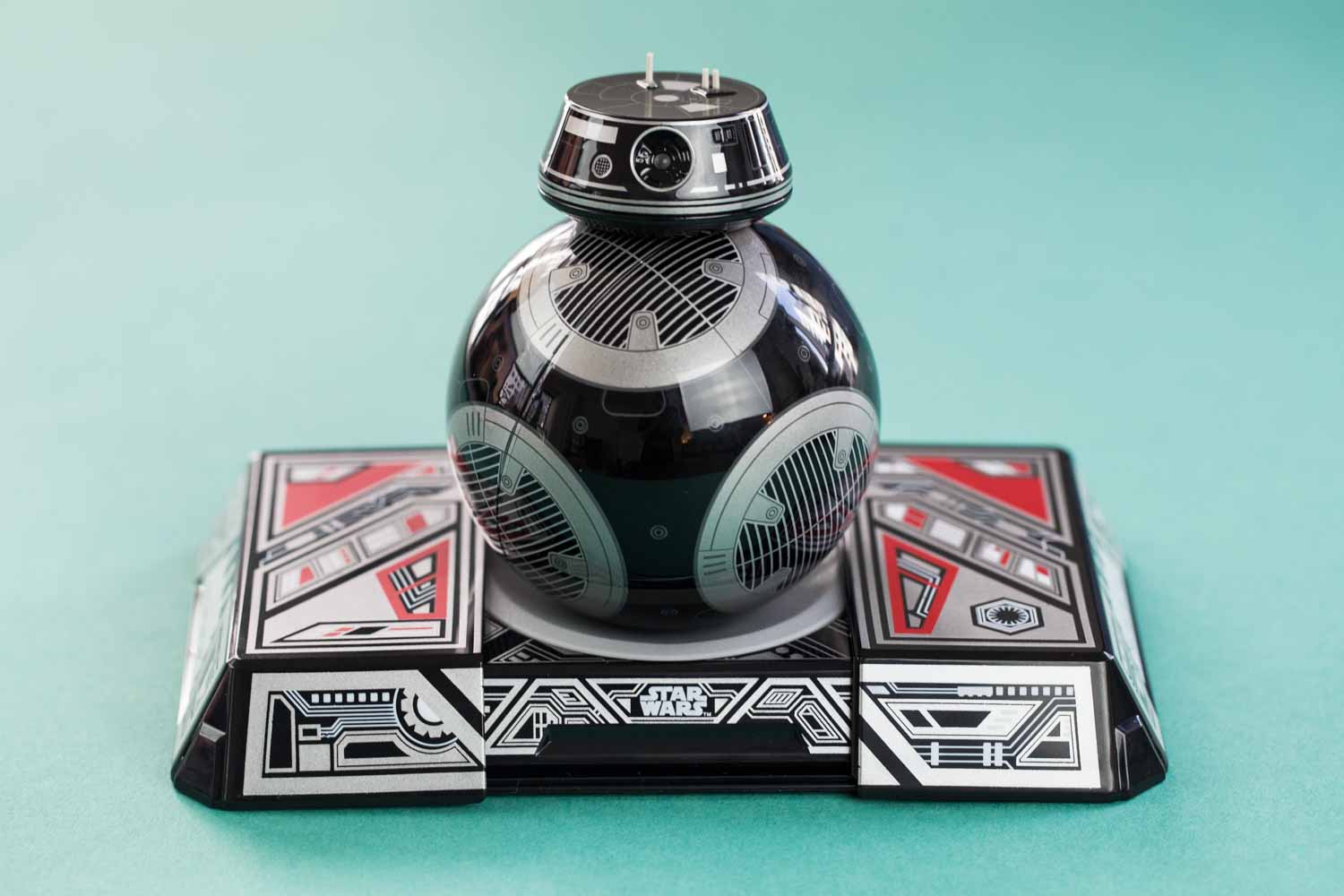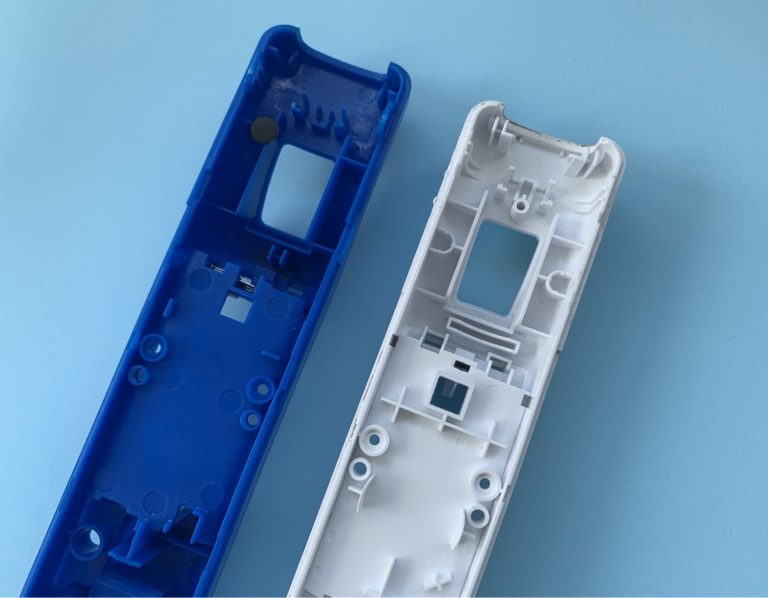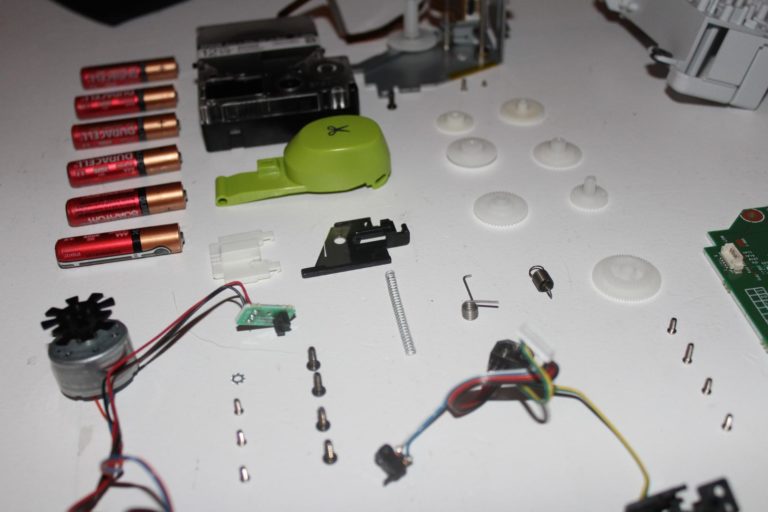In honor of Force Friday, we teamed up with the engineers over at Sphero to bring you two exclusive teardowns of Sphero’s Star Wars toys, R2-D2 and BB-9E.

When we first unboxed the little black droid called BB-9E, we thought to ourselves, “Is that an evil BB-8?” There’s no mistaking which side this mysterious new character plays on–even its conical head is reminiscent of Darth Vader’s helmet!
BB-9E has many of the same features as the Sphero’s original BB-8, so be sure to check out that teardown for a deeper breakdown of the components inside the body. Here’s a quick look at the new droid (please excuse our poor driving skills):
For this teardown, we’re focusing in on 2 major features of interest:
1. Lights in the head – BB-9E’s head features a glowing red light and two small blue lights, powered wirelessly with an inductive coil
2. Weight Compensation – BB-9E’s head is heavier than BB-8 because of the new light features, and as such requires counterweights for balance
For our new readers, Fictiv is a manufacturing platform for part fabrication (including 3D printing and CNC machining) and our expertise is around the mechanical side of hardware development. For teardowns, we dig into the mechanical systems and leave the electrical analysis to our EE friends.
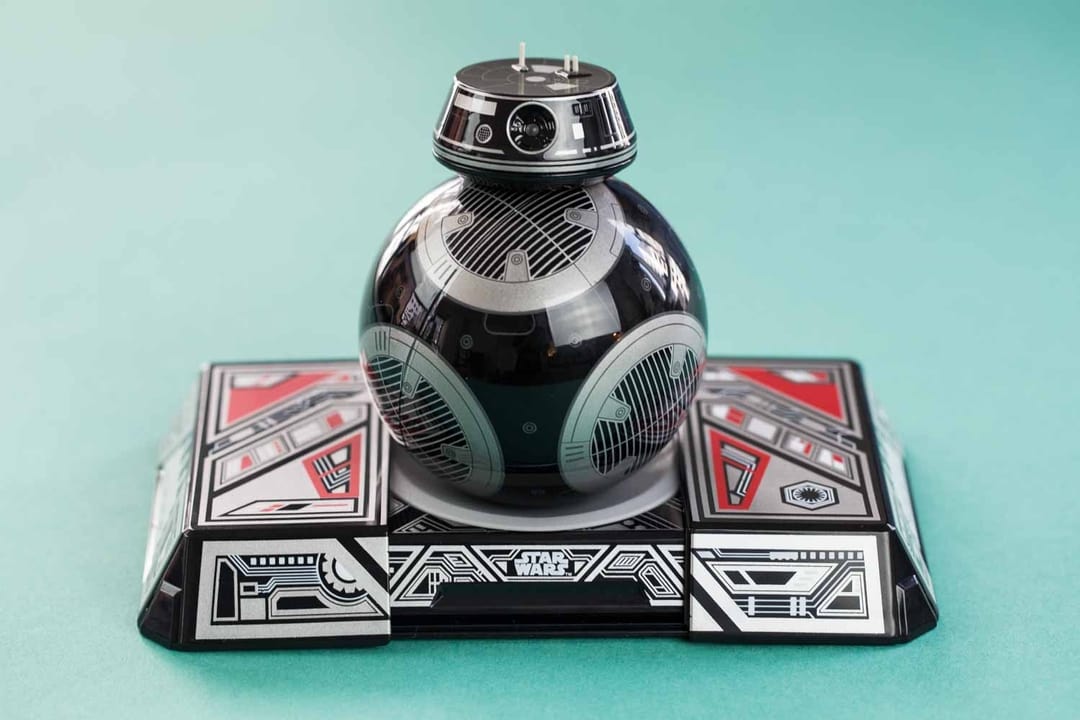
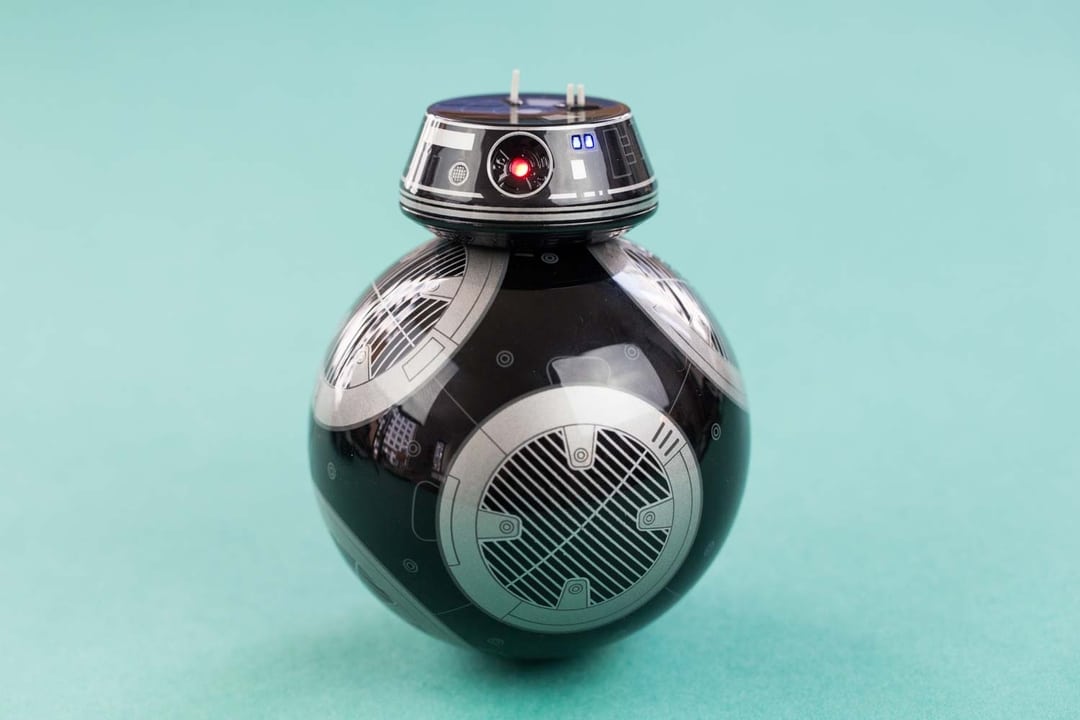
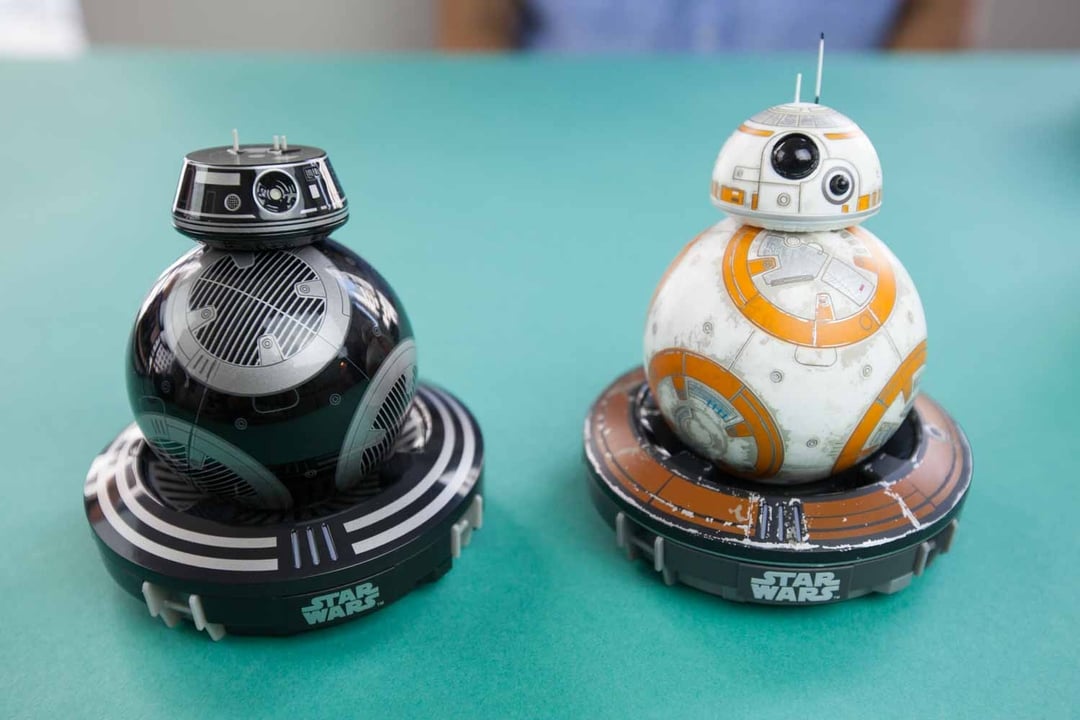
Lights in the Head

The biggest upgrade BB-9E received is a glowing red cyclop eye and two accompanying blue lights. In comparison, BB-8’s head was just a plastic shell containing magnets.
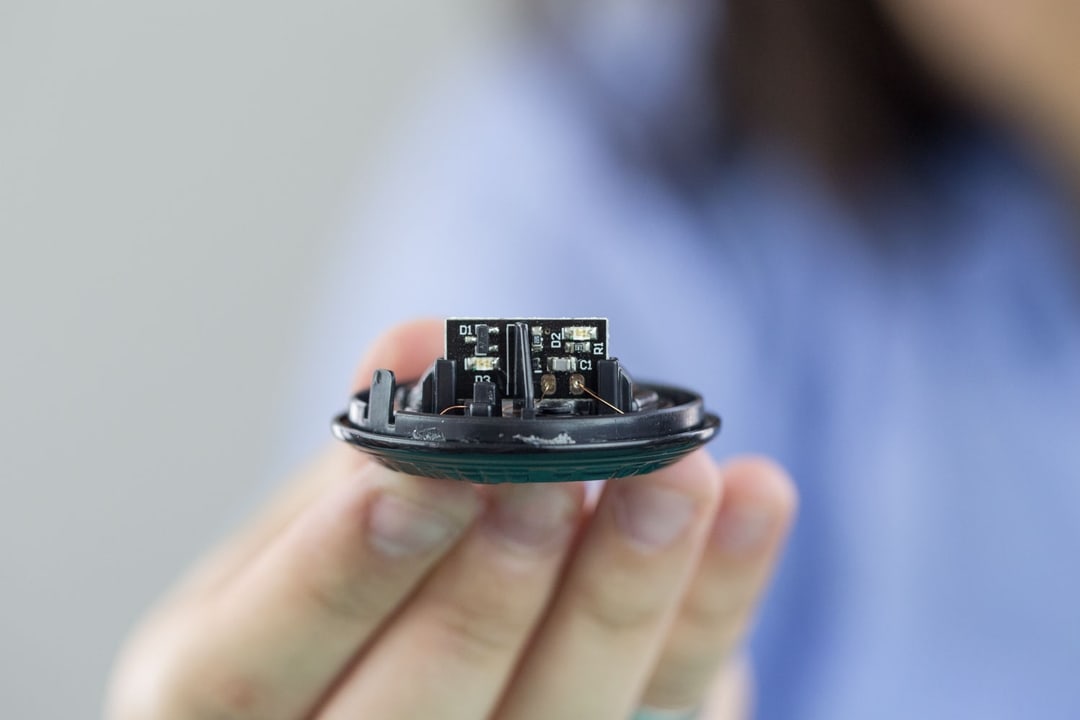
As a result, the head had to be completely re-engineered to accommodate a light guide and a PCBA.
There are only 2 LEDs on the PCBA: one red and one blue. The LEDs are placed fairly close together, and they make use of a single light guide. To keep the colors distinct, the head bottom enclosure incorporates a light wall.
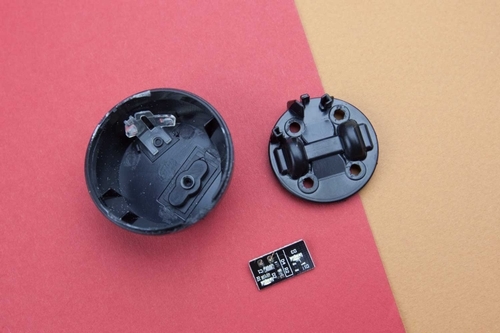
BB-9E’s head is magnetically attached to its body. How on earth is power transmitted without any physical connection? Keep reading…
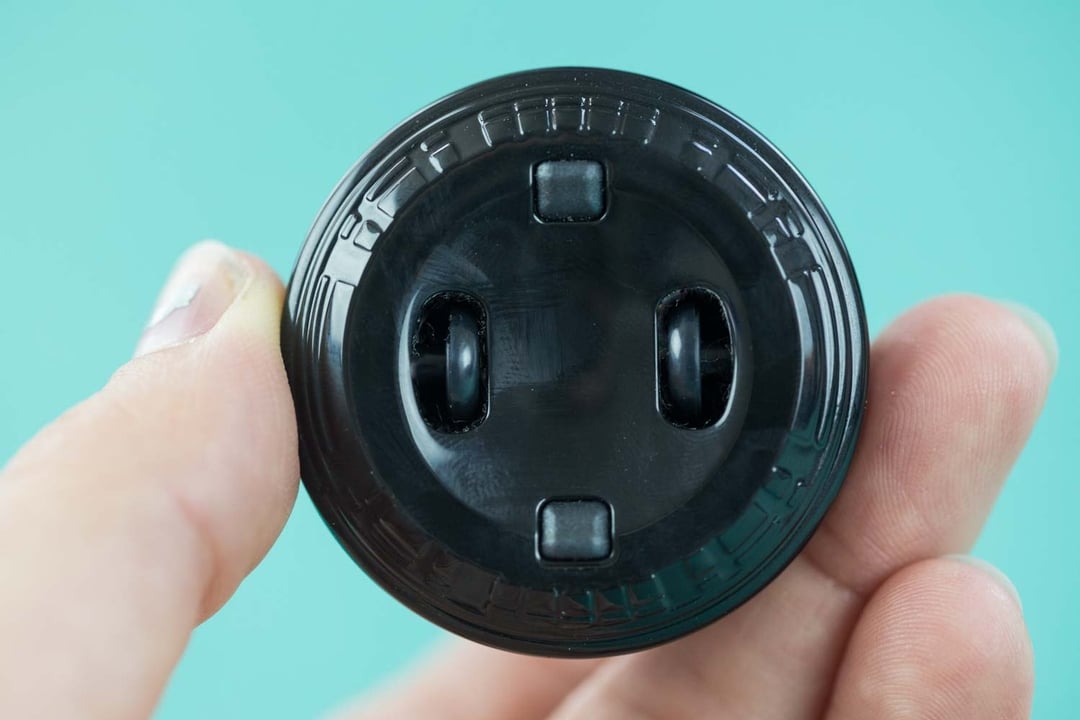

As it turns out, the bottom half of the head contains a secret: copper windings.
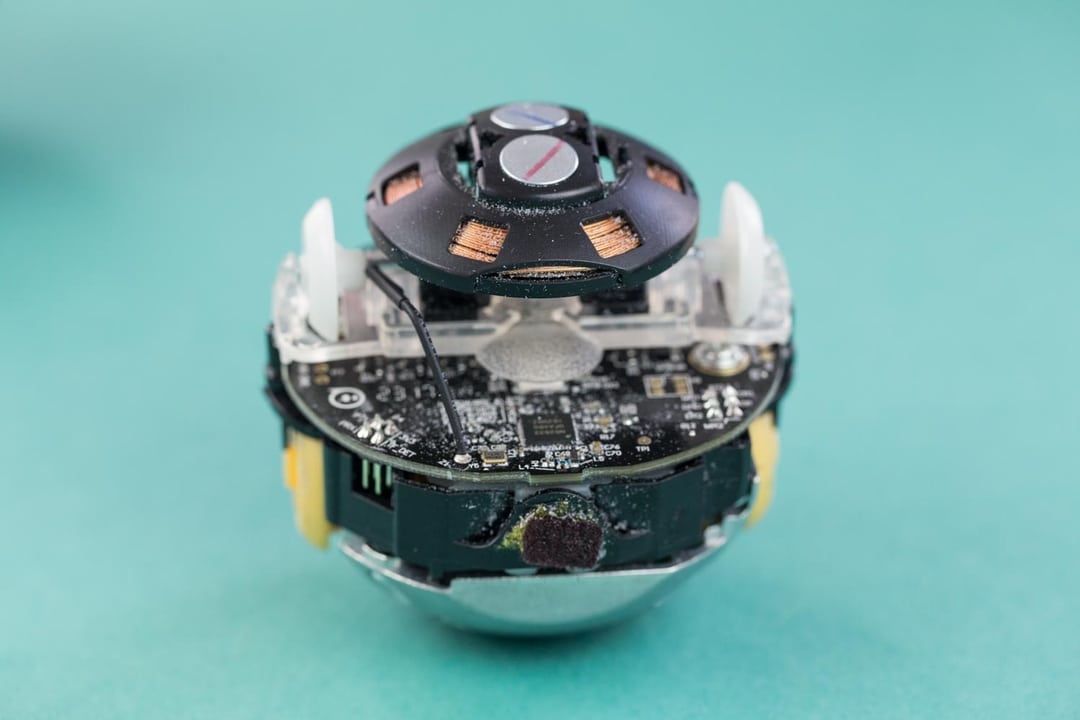
The lights in the head are inductively powered. In the head we have receiver coils, and once we opened the body we found the transmitter coils.
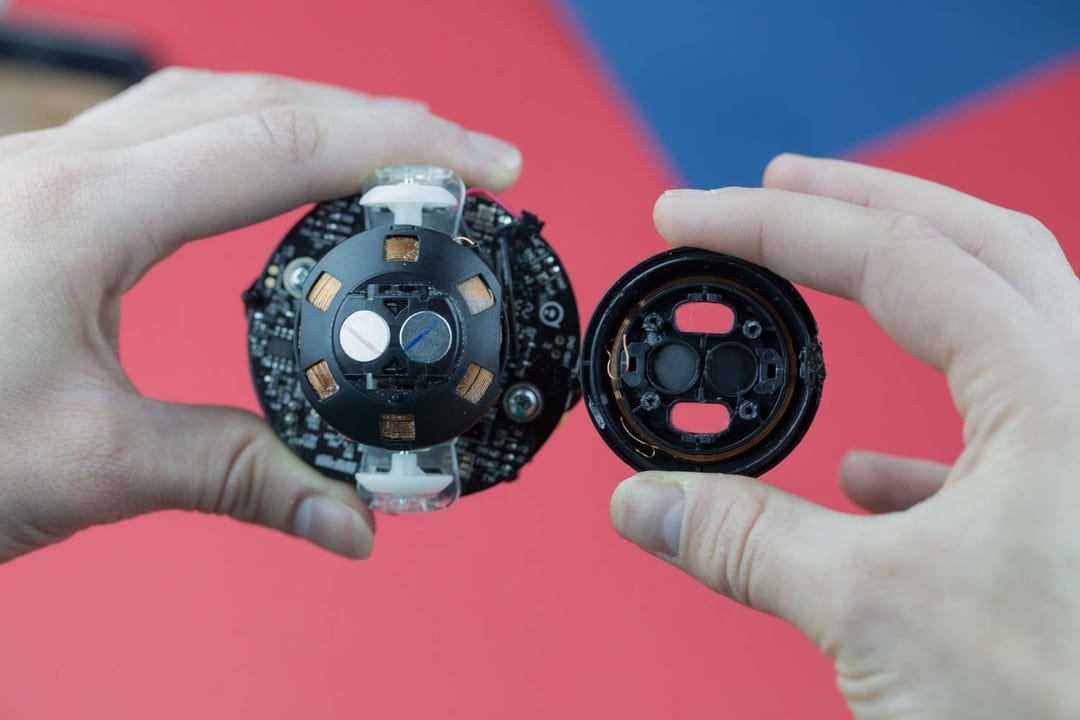
Transmitting power through a moving interface is no easy feat — we’re not aware of any other applications of this clever technology. Lots of kudos for Sphero’s innovative engineers!
Weight Compensation
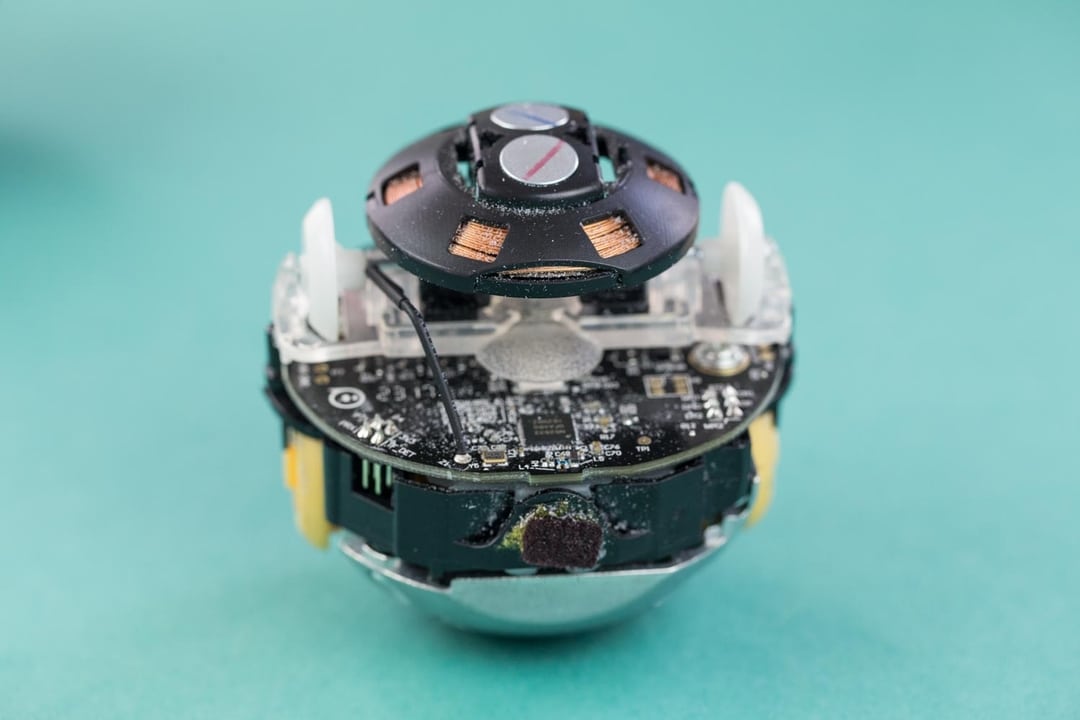
Due to the presence of the inductive coils, BB-9E is more top heavy compared to BB-8.
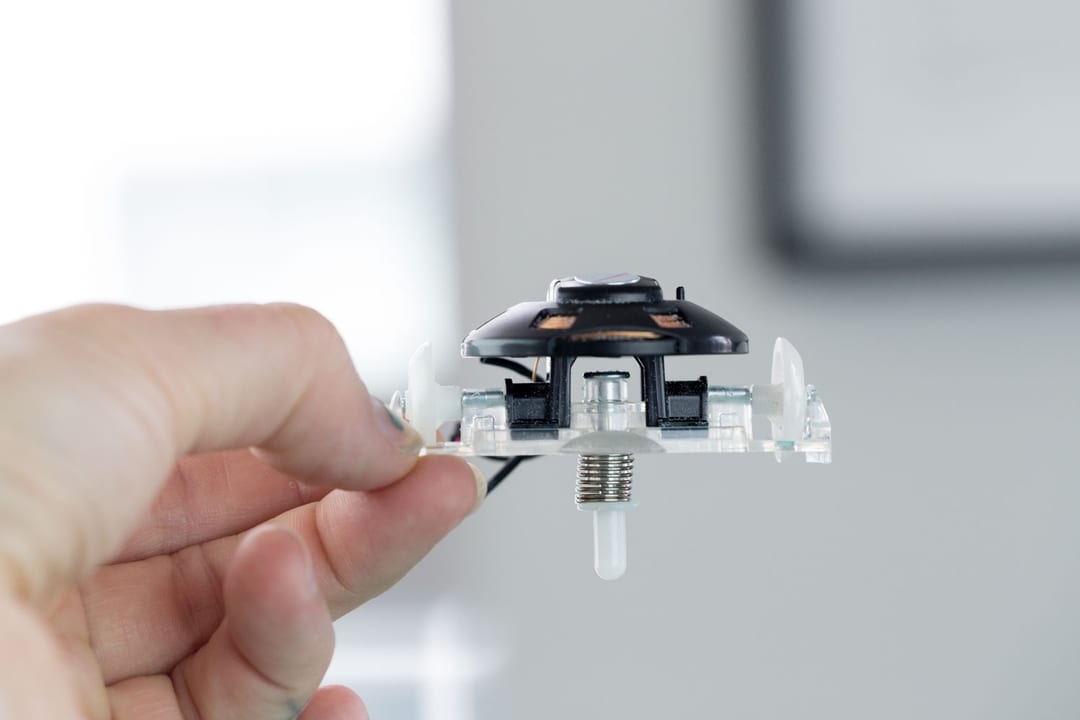
To compensate for this, a cast zinc counterweight has been added to to the bottom of the body internal assembly.

To compensate for this, a cast zinc counterweight has been added to to the bottom of the body internal assembly.

BB-9E is 24.5 grams heavier than BB-8 as a result of this change. BB-9E’s head is 1 gram heavier, while its body is 23.5 grams heavier!
Main Takeaways
We love that Sphero’s original robot platform is so versatile: The launch of BB-8 and BB-9E are brilliant ways to leverage Sphero 2.0’s foundation.
While the Sphero team could have just made a new plastic & magnets head and applied new decal work to make BB-9E, they took the slightly harder route of adding the lights to keep things interesting. Being creative engineers, they actually wanted to add even more features than just the lights, but such is the nature of product releases with hard deadlines (more on this in an upcoming article featuring the Sphero engineers).
Big thanks to the hardware team behind this great new product for giving us a first look to share with the Fictiv community. Be sure to check out our teardown of Sphero’s R2D2 toy and our exclusive interview with Sphero’s engineers.
